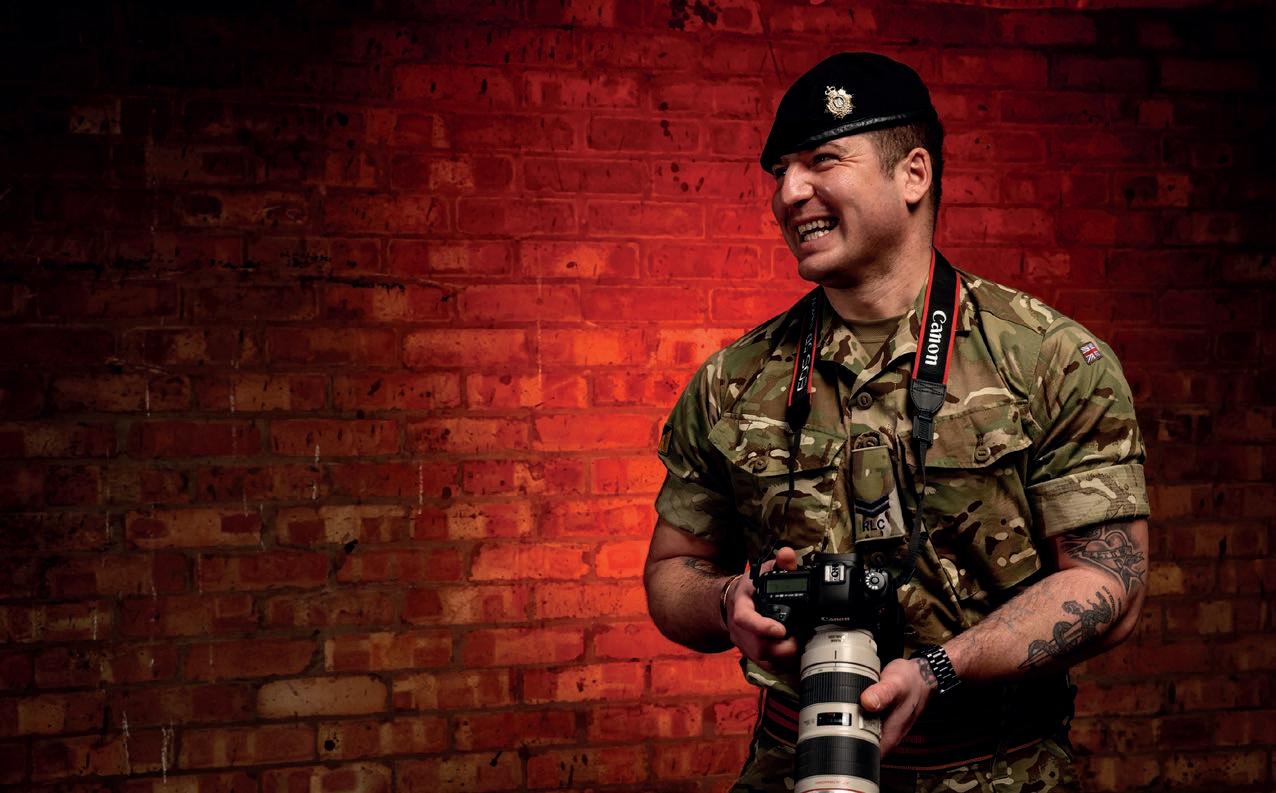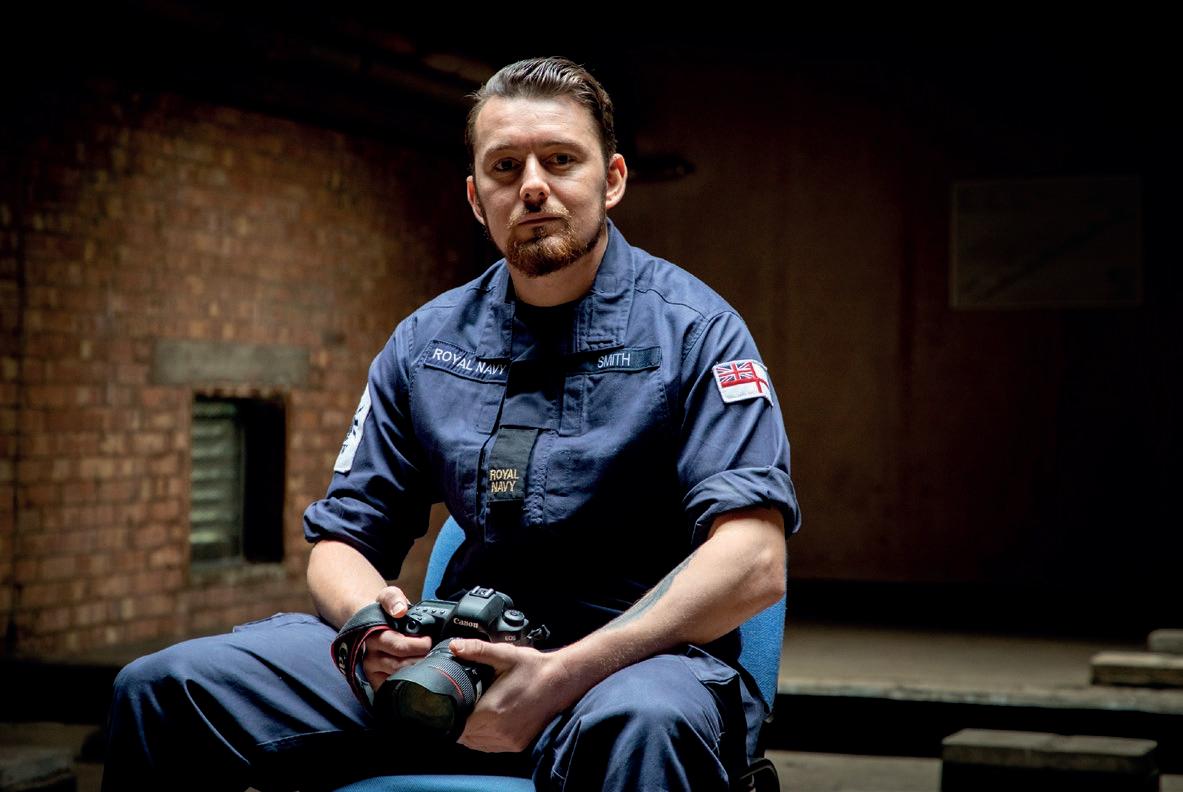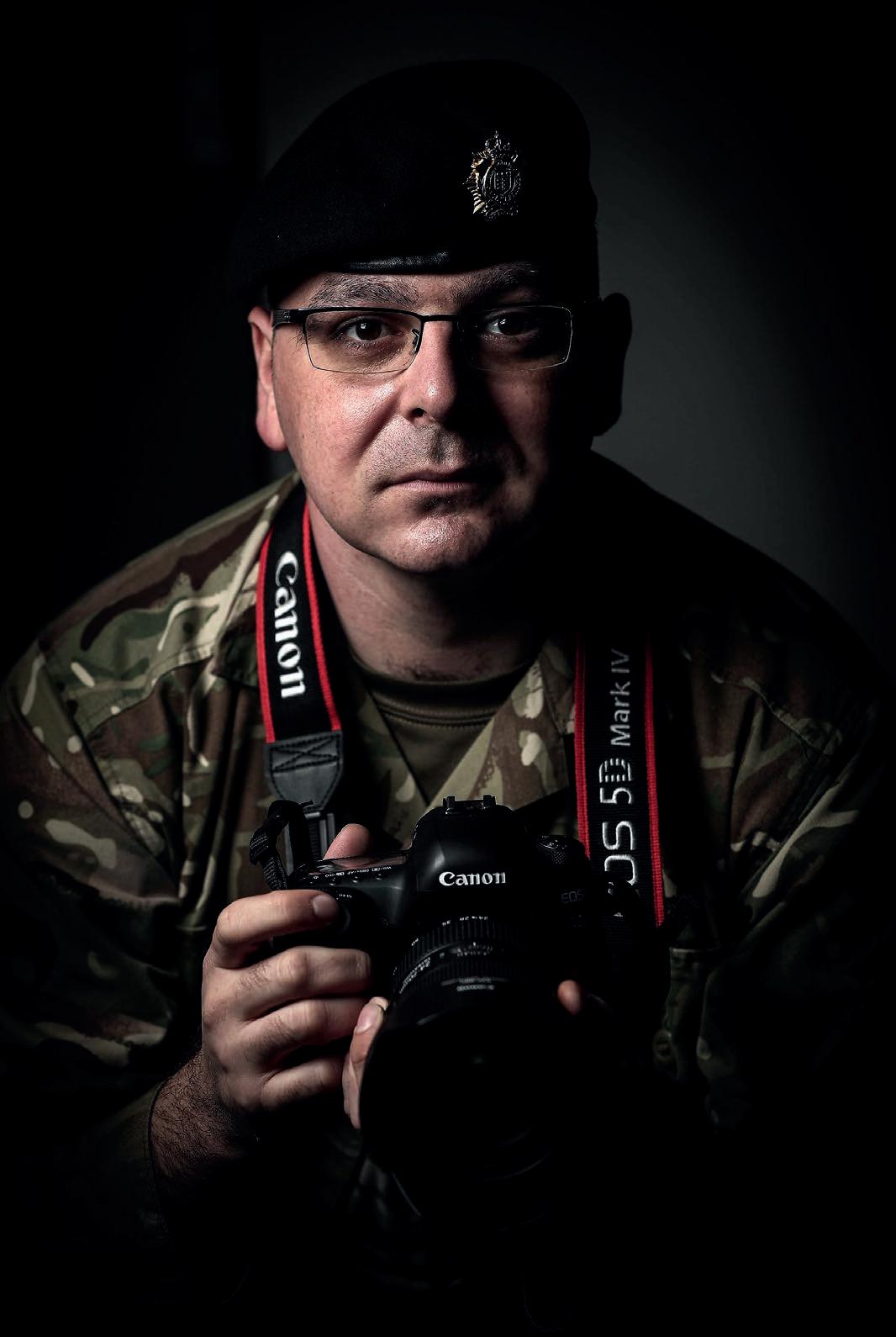
7 minute read
Defence School of Photography
Aircraftman Emily Muir © UK Ministry of Defence CROWN COPYRIGHT, 2021
London for two years. Originally from Bournemouth, she said that although she enjoyed her job she wished to be able to be more creative with her work and leave her office-style job. Aspiring to go to RAF Lossiemouth when she graduates, Amber wishes to take all her new-found skills and push herself to be more outgoing and experience all the RAF has to offer. Speaking to those wishing to join the RAF as a photographer Amber says: ‘If you want to do something creative with exciting experiences then don’t hesitate, just go for it.’
Aircraftman Emily Muir (26), above, is originally from Glossop near Manchester and is currently in the fourth week of training at DSOP where the aspiring military photographers attend the intensive nine-month course where they learn the basics of camera handling, how to capture and document crime scenes and through to creative lighting for portraiture, group images and how to handle them. Talking with Emily she said: ‘Photography is something that I’ve always wanted to do – I went to college in Manchester taking photography which is very different to the course here at DSOP. At college it was more about the artist’s work and the emotion behind imagery whilst at DSOP we learn the in-depth camera techniques needed to produce that same photography.’
Corporal Kristian Dawson, below, is an Army Photographer in training, also enrolled on the 5300 course at DSOP. The 5300 course is a tri-service course which means members of the Army, RAF and Royal Navy are integrated on their photographic journey to meet the operational requirements of all three services. The course is run by a mixture of civilian and military instructors with unfettered photographic knowledge and experience taking their students from camera basics to fully operational professional photographers at the culmination of the course. g

Corporal Kristian Dawson © UK Ministry of Defence CROWN COPYRIGHT, 2021
Kristian who hails from Yorkshire, now resides in Woolwich, London and has an eight-year-old son. He joined the Army in 2007 with the 2nd Battalion Royal Regiment of Fusiliers which has seen him serve in Cyprus, Hounslow, Uxbridge and Germany. In 2009 he was deployed on Herrick 10 in Afghanistan. On return he transferred to Kings Troop Royal Horse Artillery where he learned how to ride. With a keen interest for the arts and nature, photography felt like a natural path for Kristian: ‘I just love the seemingly unlimited creative freedom a camera gives me.’ Upon first picking up a camera in 2018, he developed an instant passion. He applied to the Army Photographic branch a year later, sailing through his selection to be rewarded with a place at DSOP. Kristian believes the course and its team of instructors has given him the tools and inspiration to see the world differently and capture it in an array of unique ways through his camera. He thoroughly enjoys engaging with people from all walks of life so DSOP and photography gives him that platform to be a people person. Ergo, he’s eagerly anticipating Covid-19 restrictions being lifted so he can test his photography skills with a wider source of subjects. Kristian is finding the theory side of the course rather challenging stating he didn’t initially realise how much theory went into photography but finds it absolutely fascinating none the less. He adores the practical side of the course, feeling most comfortable when behind his camera. DSOP’s 5300 course is proving to be the catalyst for him to turn his passion into a profession. Kristian is currently four weeks into the course covering practical lessons on aperture, shutter speed and ISO control with theory modules on white balance, composition and the rules of reciprocity amongst other things. In the coming weeks Kristian and his peers will be introduced to modules such as metadata, Adobe Photoshop, colour management and flash photography with each module carefully introducing the foundations required to understand the next level.
Also four weeks into their training is 28-year-old Royal Navy Able Seaman Gareth Smith, above. He said: ‘The course is well structured, organised and very informative. I’m enjoying every moment so far and can’t wait to get stuck into the bigger tasks.’ The 5300 course is split into two core modules. Module one teaches the fundamentals of photography and tests students understanding of the theories surrounding it. Module 2 then expands on this and assists the students in transferring these skills into a military setting. The current 5300 course has already covered composition, metering methods and software skills amongst other elements. They have plenty to look forward to including portraits, studio technical and group shots before moving to module 2. To remain in line with Government guidelines and to ensure students remain Covid secure at all times the on-site training facilities, RAF Cosford has established a lateral flow test facility. This processes around 350 tests per day and photography students are tested twice per week with results delivered in under 30 minutes – enabling their training to continue safe in the knowledge all those involved are free of Covid-19.
Corporal Sam Terry (35), right, of Colchester, Essex and serving with the Royal Logistics Corps at the school, recognises the value of the excellent training provided by the staff at DSOP. Sam, who served in the Royal Signals on Operation Herrick 15/16 in Afghanistan, before transferring over to the RLC, which enabled him to train to become a military photographer at the school has learnt quickly that there are many aspects of the 28-week course to take on board and prepare for. When questioned on how the course was taking shape he said: ‘I’m really looking forward to the rest of the course, as it’s providing me with the tools and knowledge I need to progress further on into my career as a professional photographer
Royal Navy Able Seaman Gareth Smith © UK Ministry of Defence CROWN COPYRIGHT, 2021

in the military.’ There is a requirement by the MOD to provide the Armed Forces with highly trained photographers for such elements as homeland security and the operational aspects of the armed forces. This is all catered for at DSOP. Sam will no doubt graduate from DSOP with flying colours at the end of the course and went on to add: ‘I’ve been extremely lucky to be given the opportunity to study here under excellent instruction, and the wealth of knowledge I’ll have gathered by the end of it all will be invaluable in moving forwards with my career as a military photographer in the Army.’ It’s fair to say that the training given to aspiring photographers in the armed forces from the staff at DSOP is second to none, and long may it continue into the future.
Corporal Sam Terry © UK Ministry of Defence CROWN COPYRIGHT, 2021


The decisive frame
From documenting military operations and international civil uprisings to infamous political figures and royal family members, press photographer Jim Tampin captured it all with an astute eye and considered timing, as Joel Hansen discovers
First receiving a Kodak 127 Box Brownie at age 12, the desire to become a photographer clicked: ‘I started taking hundreds and hundreds of pictures. I left school at 15 and I remember going home, calling the local newspaper to speak with the Editor and asking him if he would be interested in taking on an apprentice photographer – that’s how it started.’
Jim still remembers the first day at his local paper, the Wiltshire Gazette, and the chief photographer throwing an old plate camera at him to figure out how it worked. ‘It took me ages, but I eventually found out how to work it, and he then said to me “we don’t use those we use these,” and gave me a VN 9x12cm camera, a capacitor and a flashgun. That was my formal training.’
The stint at the local paper came to an end when Jim enlisted in the army: ‘I was called in by an officer and asked about my prior experience as a photographer and whether I would want a job working as a photographer in the army – I bit his hand off.’ Deployed to cover Kenya’s independence from the UK, the post opened a door to a country where Jim would meet and marry his life partner Stella, who worked in Kenya as a nurse. However, before long, the desert plains were replaced with Lossiemouth in Scotland, where Jim was sent to complete a military photography training course. Jim comments: ‘It didn’t please me one little bit because I wasn’t interested in the theory or anything else. The only thing I was interested in
Right: ‘I’ve got it, first-class.’ ‘Rhodesia acquired a new passenger airliner jet, and when we went out to the airport to do the pictures they produced two cheetahs. This picture was taken by chance when the cheetah jumped up on the desk. I asked the girls there working for Rhodesia airline, have you got a ticket? And she held up this ticket, and the cheetah was looking at it.’










